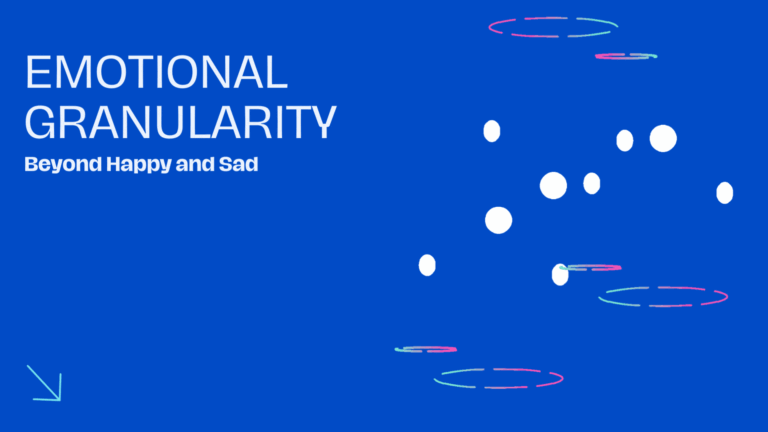We clean things. But when we vacuum, the cleaning is different. We go to those dark areas where we avoid going. Morning pages are deep cleaning daily. 3 pages of longhand writing. The practice is simple. I think one of the easiest parts of my routine. But the resistance can be immense. Morning pages are like dirty laundry for many. You just have to empty the laundry basket. Then the laundry machine does the rest. But that act of doing a small action can be perceived like such a task.
The 3 longhand pages can be a cribbing saga. The soap opera which happened yesterday. Morning pages are grumpy. They are unhappy. Sometimes even miserable. Expressing pain. Exploring dissatisfaction. All those short-fused thoughts should flow. It may sound negative and that is what we want to take out. We are doing the first thing in cleansing it. A completion of yesterday.
Cameron says she feels like calling them Mourning pages. As they are such a farewell to our old life. Introduction to a new life. A start of a new chain of thoughts. A start to a creative new day.
These pages are like meditation in action. You are going to look at the thoughts without indulging. Putting them on the paper one by one. Observing them from a distance. Like a leaf flowing on water. These thoughts will move on the paper. Jot them down.
My first contact with morning pages.
It was 2001. My professor in Architecture, M K sir, got a book. “The Artists Way” by Julia Cameron. His daughter in the US had sent it for him a few years back. It looked like a photocopy. He was an avid reader and I rarely saw a photocopy in his hand. So I asked him why it was a photocopy. He said earlier only photocopies of the book were sold. I took it as a joke. But later I found that it was indeed sold as a photocopy earlier. And after a few years was published by a well-known publisher. I have no bounds to imagine what Cameron would have done in this free liberal world like today. If this world was available to her then.
In those days I was in the business of Xerox. Xerox in India is an umbrella term. Indians use Xerox, for photocopy. Any photocopy shop is also a Xerox shop. A Funny pronunciation which many calls is Zorax. Sounds like a superhero. Some confidently misuse it for an x-ray. So we have a fun undertone when it comes to xerox. What I mean by the business of Xerox is that I used to get a Photocopy for my classmates. Make several copies for everyone. In turn, used to get my copy for free. And sometimes, as I used to get some pages of books I liked. I took 3 pages of “The Artist’s Way” and those were about the first tool. Morning pages. That was my first contact. I borrowed the book and took notes from the program. And my journey of morning pages began. It’s been on and off but it is one of the tools I Cherish the most.
“Of all the self-help tools I’ve tested through the years, one has proved more enduring than the rest: Morning Pages “
Oliver Burkmen
Similar to mindfulness, if you sit to write morning pages with the goal probably that may not serve the purpose. The goal here is paradoxical. In this case, it is to be ok with the goal not being fulfilled. To put down what is not done with no goal. Start writing.
Purging with morning pages helps with time. Everyone’s experience of morning pages can be different. These are a couple of things that I see from my perspective and I have been doing morning pages since 2001. Of course, it has not been a continuous process and it has been an on and off with morning pages. But overall I feel that the completion effect morning pages give you every day about yesterday is unparalleled. This is one technique, so many different techniques that catharsis can happen but I think this is one is the easiest ways in which we can manage and we can achieve the blank canvas that is needed.
The purpose of Morning Pages is not to be theatrical. They seldom sound nice. That’s OK. They are not meant to be “genuine writing.” Expect them to scatter all over the place. They may jump from subject to topic. Relax. Investigate your thoughts with curiosity rather than judgment. Morning Pages can be in any order. Jot down whatever comes to mind for three pages. As a general guideline, you utilize standard A4 pages. You will tend to modify your ideas to suit the tiny format if you utilize little pages. Remember, your pages are for your eyes. They are not for display. Shared with nobody outside of your awareness. Do Morning Pages every day and be on the lookout for the shifts they will bring you.
Do not over-think Morning Pages: just put three pages of anything on the page…and then do three more pages tomorrow
Julia Cameroon.
The movement of our thoughts and our hands both travel across our minds. This meditation technique is easy and centring. Meditators describe these ideas as our “cloud thoughts.” Stream of consciousness: We jot down anything that comes to mind, whether it makes sense or not. Instead of wasting 15-20 minutes “doing nothing,” we are using those same times to do something. Our work ethic is strong, this is appealing to us.
Morning Pages is a simple exercise that is effortless while being beneficial. They are a welcome change, and in smaller amounts, they parse out change. ” Pages” functions as a faithful, tough-love buddy for any significant amount of time. If anything comes up that we are trying to avoid, they will approach it and talk about it until we deal with it.
Cleanse your thoughts.
Thoughts never get cleaned. Thoughts are messy. Thoughts are unclean. Thoughts are dirty. Thoughts are negative. Thoughts cannot be completely clean ever. But they can be close to clean. By observing them not indulging in them. Looking at thoughts like a foot-long distance. When you start writing morning pages you start putting all those thoughts on the paper. They get translated into words on paper rather than occupying your headspace. By indulging in them throughout the day we tend to make them bolder. when thoughts occupy the space on the paper they relax the real estate of your mind. once every morning you are writing your thoughts on you will know how pricy is the space in your head. This transfer of thoughts helps you to cleanse them a little bit. And get ready for the day.
If we go down into ourselves, we find that we possess exactly what we desire.
SIMONE WEIL
In the third wave of therapies, there is an important factor. Therapies like Acceptance and Commitment Therapy. Some of them are based on something RFT. Relational Frame Theory & functional contextualism. Never mind the term just look at what it means. It means not get indulged in the content of the thought. There is a lot of other science where the content of the thought is important. The content is understood, analysed, and changed. when it comes to a new breed of therapies. So-called process-based. You don’t give much heed to the content of the thought. That is what we are going to do when we write the morning pages. Rather we are going to observe them as a bubble of thought floating. A bubble in a different context and not indulging in the content.
Channel your Emotions.
Emotions are a complex thing. It’s not like right now we are understanding what emotions are. It’s been centuries. Even though the word emotions is relatively new. The crux of emotion has been there for centuries. When researchers on emotions conclude they are not able to define it, we are adamant on figuring out the same.
What happens with morning pages is that you start putting all your thoughts on paper. Every emotion is connected with some kind of thought. For example, if I’m thinking “I am not good enough” that is going to contribute to some amount of sadness. Every emotion whatever we feel is connected to some kind of thought. For example “what happened was very bad and I just can’t stand it”. This is bound to trigger some amount of anger. Anything or everything that we are thinking is going to be channelized into emotion. Anger, joy, guilt & shame. They are in several of them. Morning pages help us to channelize them. Like any form of catharsis. wherein we are putting all our feelings on paper. We are looking at them through a different perspective or a different lens.
Continuous Practice helps to manage emotions better. Of course, we are not going to become some stoic philosophers. But we can handle them a bit better. Expecting that all your emotions will go off, or you will not experience any emotions. Or you will never experience any anger that’s not going to happen. No matter what you do every emotion is going to come and you need to experience that. Morning Pages is a wonderful way to put these thoughts and emotions on paper. You can identify and name your emotions. They don’t need to be perfect. As I said researchers are still defining it. So you won’t have to get in that struggle. When we are writing it becomes better for us to understand what we’re experiencing. It can be from yesterday or what you are experiencing right now.
Canvas for creativity
Michelangelo was asked how has he been able to make such an amazing statue of David. If you look at David it’s detailed. When asked Michelangelo How has he created such a wonder. He replied,” when I see a piece of marble I already know David is inside it. My job is to remove what is not David”. What he sums up is creativity is nothing but it’s already present in us. We have to remove what is not being creative.
Education is the manifestation of the perfection already present in man
Swami Vivekananda
Whenever we want to do something our past is a strong influence. The past creeps in the present and dominates the future. It is a small influence with a big impact. Past has the shackles on our legs in a very powerful and strong way. It reminds me of a story of a baby elephant. The baby elephant was trained to be at one place by tying her leg to a metal chain. The elephant tried to break the chain and quit trying when her strength was not enough. After several years the Elephant was big enough to even uproot a tree. But was not able to break the chain. Though the elephant is quite big and strong and can break the chain. The shackle is no more just a physical one. It has become a mental shackle. The elephant doesn’t even try to break it. It gives up. This fable is somewhat metaphorical to our experience with the past. The past is like that the shackles. Chains have been there for so long.
We hold on to it and you’re not able to take or perform the action. We won’t try, we plan for things, we lookout for support. It’s all a useless effort. The same to-do lists the same new apps. What we need to do is find out what is the actual shackle that is holding us down. Pinning us to the past. Everything in the past is not completely to be tossed off. We don’t throw the baby with the bathwater. Rather we should know what are the things that we don’t want from the Past to dabble into the future. And this is what helps. We get the support on morning pages. We start putting all the things from the past that popup. All the things that may have even occurred yesterday. Put them on the paper as soon as the morning strikes. So that is the shackles are broken.
It is not a task of one day it is a continuous process. We are going to put it on paper again and again and every day. And there is no end to this. This is a continuous process. It’s like taking bath. which we need to do again and again. Every single day, so that all the things can be poured onto paper. The shackles or all the chains of the past become loose and eventually get broken.
Compassionate self-talk.
Have you ever advised any friends?. Of course, you have. Now let’s imagine a scenario again. A friend has come to you with a problem. He/she has committed a mistake. And you’re all in that therapist mode. where you are talking with empathy and without any judgment. Right now you are compassionate with the person. You are understanding him/her, you’re friendly. Trying to help or support the person as much as you can.
“We live in a time when science is validating what humans have known throughout the ages: that compassion is not a luxury; it is a necessity for our well-being, resilience, and survival.”
Joan Halifax
Imagine a similar mistake you have committed. It is a mistake done by “YOU” The complete equation now shifts. The same problem you are experiencing. Will you have some conversation with yourself? The compassionate one. The one full of empathy. Possibly not. Now your language but very different. Harsh and so-called practice. A lot of CBT therapists use this technique called a “Double standard method”. What is t means is we are very different when looking at other people’s mistakes. But our sound is like a blunder of a lifetime. We are very malleable with others and stern with ourselves. these double standards are very inherent. When we write morning thoughts on paper we become present to our double standards. How we bash ourselves for even small mistakes. And once we are open to this idea we become more compassionate.
“Even when compassion can’t “make a difference,” it makes a difference.
Mazzareli & Trzeciak in Compassionomics
Of course, it doesn’t mean that we should overlook our mistakes. But rather it is a way to generate a new perspective of ourselves. Rather than badgering ourselves with, how wrong we are, how bad we are, or how sad we have been. I’ve seen a lot of people crucify themselves for thinking negatively. How can someone be positive all the time? Unless you are high on something all the time. Such badgering does not help it makes you less compassionate to yourself. In turn, this translates into a wave of anger towards yourself or towards others. One of the best ways of doing this is to write down all your regrets and negative views of yourself. Early in the morning so that they don’t dabble with your compassionate day.
As Paul Gilbert puts in his book “The power of self-compassion”. The first secret to build confidence is ” beware of your own undermining”. The second is “self-compassion”. We all must learn to cope with fear and uncertainty while we are developing our self-confidence. For the compassionate mind, it’s about how we keep going when things are tough for us. The more compassion you may have, the more robust your self-confidence will be through tough circumstances.
Thank you for reading. It makes a difference. If you want to design a better day. Download our Day by day Action Journal basic version for free here. To know what new ideas I am working on visit my digital garden here












